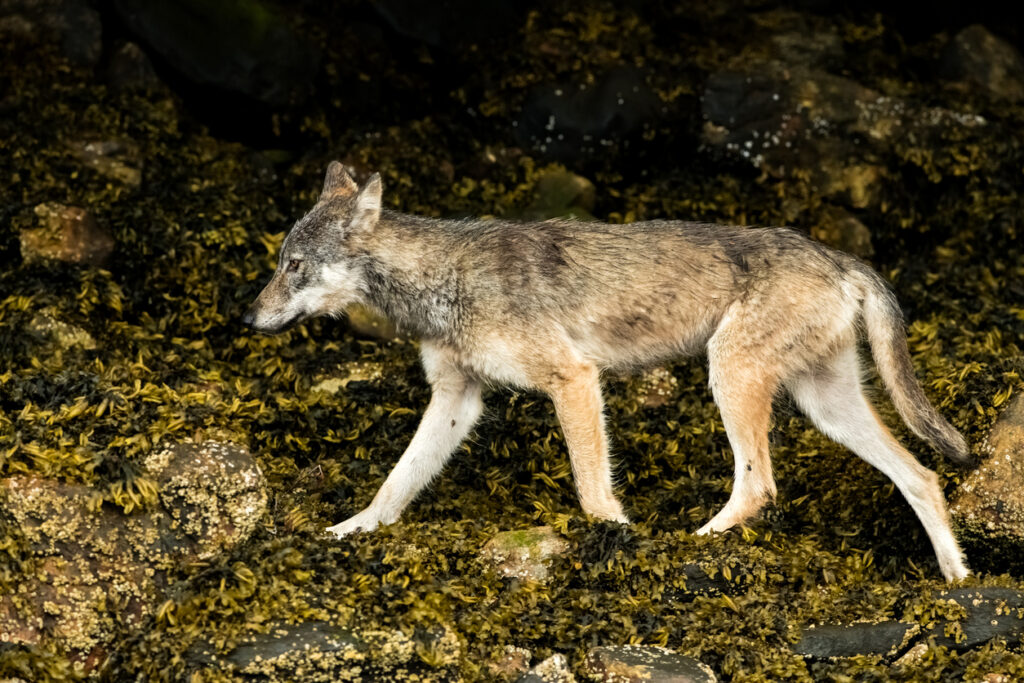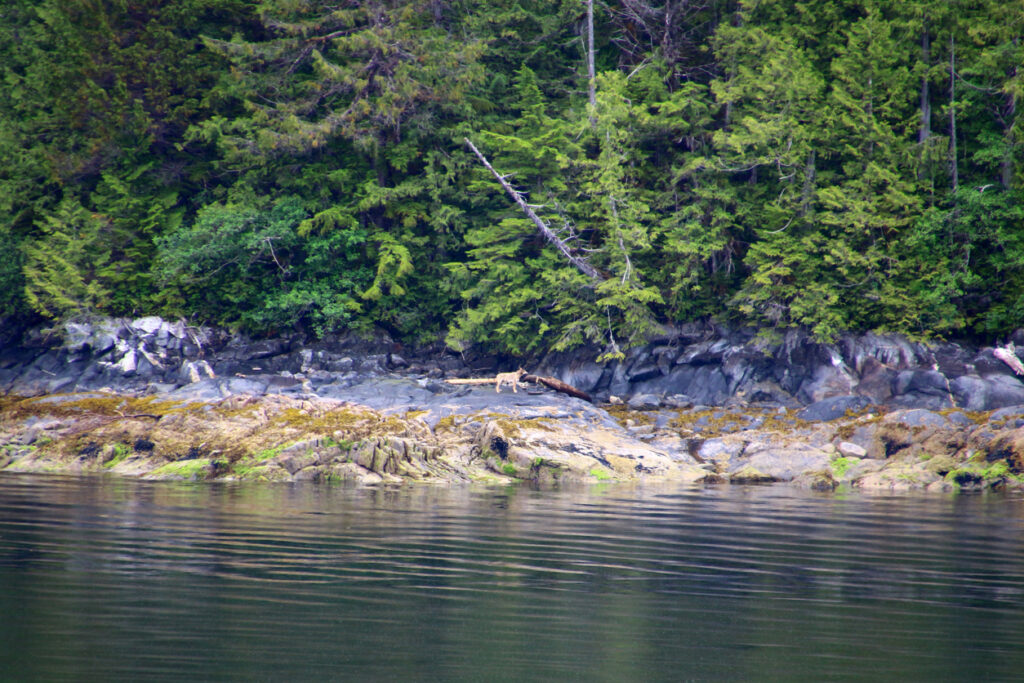The ability to adapt is what keeps all species, including human beings, moving forward. Unfortunately, an ever-growing human population means our lives are encroaching more and more into the animal world, sometimes resulting in conflicts.
The story of BC’s coastal wolves is one for Darwin’s books. These are grey wolves that, in an effort to adapt, have moved to the coast and even swim to nearby islands in search of habitat, food and family. These wolves are only found west of the Coast Mountain Range and have earned the nickname “sea wolf.”

A recent study that involved examining many thousands of wolf feces found a dramatic difference in diet between inland and coastal wolves. While wolves on the BC mainland focus on ungulates, especially deer, those on the coast eat seafood, such as salmon, seals, clams and mussels. On the outer islands, seafood can comprise up to or even more than 90 per cent of a wolf’s diet. Even on islands closer to the mainland, wolves may have a genuine “surf and turf” diet, of 50 per cent meat and 50 per cent seafood. This study also found that BC’s coastal wolves are genetically different than their inland family members, creating a distinct genotype.
One sea wolf in particular that had been receiving some media attention was Takaya, and the woman following his footsteps and advocating for him and other wolves like him was local resident, environmentalist and nature photographer Cheryl Alexander. Takaya was killed by hunters in 2020, but he had lived an extraordinary life until that point – Takaya swam between a few different islands and Cheryl explained that with no natural prey in the area, such as deer or elk, his diet was about 95 to 100 per cent marine based. Takaya had learned how to find and fish for pricklefish in the ocean, he had learned how to take eggs from Canada geese nests on the islands, he had learned how to hunt seals and managed to take quite a few seal pups, and most remarkably, his islands didn’t contain any consistent source of freshwater. He did have access to a pond, and in years of drought Cheryl had found evidence of Takaya digging deep into this pond to try and strike water farther down. Cheryl estimated Takaya may have gotten a lot of his fluids from the seal pups he eats.
Documenting Takaya’s life and learning more about him has taught Cheryl a lot about coastal wolves in general.
“I’ve learned about their ability to adapt and their resiliency,” she said. “They’re carrying on their lives in ways we have maybe not traditionally thought of wolves living. They have adapted to living a coastal life. The most remarkable thing is this amazing ability to learn how to live in a new environment and adapt their behaviours.”
Cheryl said Takaya was the most extreme example of a coastal wolf, but other wolves have learned to make the most of their surroundings, such as fishing in rivers alongside bears or scavenging marine life that has washed up on shore.
In addition to the aforementioned project that studied wolf feces, Cheryl explained that the BC Ministry of Forests, Lands, Natural Resource Operations and Rural Development is also undertaking a study, examining stomach contents to determine prey of coastal wolves, and also examining and testing the DNA of coastal wolf carcasses provided by trappers. All of this information should give researchers a better idea as to the coastal wolf population on Vancouver Island, as well as their distribution.
“Understanding our carnivore populations is very important,” Cheryl said. “They’re a keystone species, and they’re important for maintaining ecosystems. We need to figure out how to co-exist with them.”


